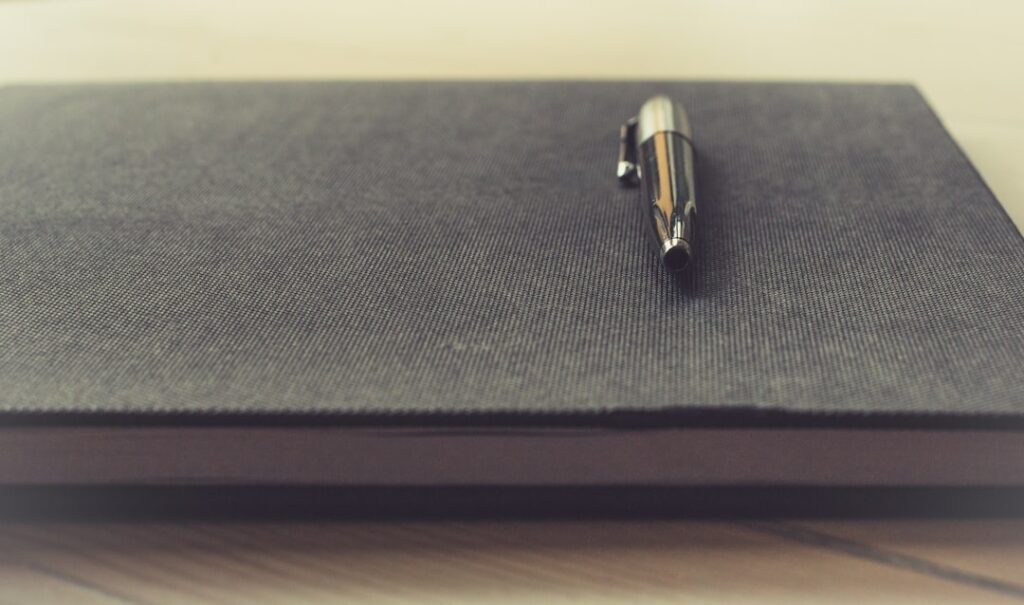Writer’s block is a common struggle for many writers, both professional and amateur. It can be frustrating and discouraging to sit down to write and find that the words just won’t come. Writer’s block can manifest in different ways, from a complete inability to start writing to getting stuck in the middle of a piece and not knowing how to continue. It can be caused by a variety of factors, including stress, self-doubt, perfectionism, and lack of inspiration. However, there are many strategies and techniques that writers can use to overcome writer’s block and get back to their creative flow.
One of the first steps in overcoming writer’s block is to understand that it is a common experience and that it does not mean that you are a bad writer. Many successful writers have struggled with writer’s block at some point in their careers. It is important to be kind to yourself and not to be too hard on yourself for experiencing writer’s block. By acknowledging and accepting the block, you can begin to explore different methods to overcome it. In this article, we will explore various techniques that writers can use to break through writer’s block and get back to writing with confidence and creativity.
Key Takeaways
- Writer’s block is a common challenge that can be overcome with various techniques and exercises.
- Mindfulness and meditation can help writers clear their minds and focus on their creative process.
- Freewriting and stream of consciousness writing can help writers break through mental barriers and access their creativity.
- Visual inspiration and prompts can stimulate new ideas and perspectives for writers.
- Collaborative writing exercises can provide support and fresh insights for writers facing blockages.
- Changing perspectives and point of view can help writers approach their work from new angles and overcome blockages.
- Setting goals and deadlines can provide structure and motivation for writers to push through writer’s block.
Mindfulness and Meditation
Mindfulness and meditation are powerful tools for overcoming writer’s block. By practicing mindfulness, writers can learn to quiet the mind and focus on the present moment, which can help to alleviate stress and anxiety that may be contributing to the block. Meditation can also help writers to tap into their creativity and access their inner thoughts and feelings, which can be a rich source of inspiration for writing.
One way to incorporate mindfulness into your writing practice is to start each writing session with a short meditation. This can help to clear your mind and create a calm and focused space for writing. You can also practice mindfulness throughout the writing process by staying present with your thoughts and emotions as you write. Paying attention to the sensations in your body, the thoughts in your mind, and the emotions you are experiencing can help you to stay connected to your writing and break through any blocks that may arise.
Another way to use mindfulness to overcome writer’s block is to engage in mindful writing exercises. This involves writing with full awareness of your thoughts, feelings, and surroundings. For example, you can practice mindful writing by describing an object in detail, paying attention to its shape, color, texture, and any emotions or memories it may evoke. By practicing mindfulness in this way, you can deepen your connection to your writing and access new ideas and perspectives that can help to break through writer’s block.
Freewriting and Stream of Consciousness
Freewriting and stream of consciousness writing are techniques that can help writers to break through writer’s block by allowing them to write without inhibition or self-censorship. Freewriting involves setting a timer for a specific amount of time, such as 10 or 15 minutes, and writing continuously without stopping or editing. The goal is to keep the pen moving or the fingers typing without worrying about grammar, punctuation, or coherence. This can help writers to bypass their inner critic and access their subconscious thoughts and ideas.
Stream of consciousness writing is similar to freewriting but involves writing without any predetermined structure or topic. Instead, writers simply write whatever comes to mind, allowing their thoughts to flow freely onto the page. This can be a powerful way to access new ideas and perspectives that may be hidden beneath the surface of conscious thought.
Both freewriting and stream of consciousness writing can be effective ways to overcome writer’s block because they encourage writers to let go of perfectionism and self-judgment and simply allow the words to flow. By giving yourself permission to write without constraints, you can access new ideas and break through any mental barriers that may be holding you back.
Visual Inspiration and Prompts
Visual inspiration can be a powerful tool for overcoming writer’s block. Many writers find that looking at images or artwork can spark new ideas and help them to break through creative barriers. Visual prompts can come in many forms, including photographs, paintings, illustrations, or even just the natural world around you.
One way to use visual inspiration to overcome writer’s block is to create a visual journal or collage. You can gather images that resonate with you and arrange them in a journal or on a board in a way that inspires you. You can then use these images as prompts for writing by allowing them to evoke emotions, memories, or ideas that you can explore in your writing.
Another way to use visual inspiration is to take a walk or visit a place that inspires you and take note of the visual details around you. This could be a natural setting such as a park or beach, or an urban environment such as a bustling city street. Paying attention to the visual details in your surroundings can help to stimulate your creativity and provide new ideas for your writing.
You can also use visual prompts in the form of writing exercises by using images as starting points for your writing. For example, you can choose an image and write a description of what you see, or use it as a jumping-off point for a story or poem. By engaging with visual inspiration in this way, you can access new ideas and perspectives that can help you to break through writer’s block.
Collaborative Writing Exercises
Collaborative writing exercises can be a fun and effective way to overcome writer’s block by engaging with other writers and sharing ideas and perspectives. Collaborative writing exercises involve working with one or more other writers to create a piece of writing together. This could involve co-writing a story, poem, or script, or engaging in group brainstorming sessions to generate new ideas.
One way to engage in collaborative writing exercises is to join a writing group or workshop where you can work with other writers on creative projects. This can provide a supportive environment where you can share your work, receive feedback, and collaborate with others on writing exercises and prompts.
Another way to engage in collaborative writing exercises is to partner with a friend or fellow writer for a specific project. For example, you could take turns writing paragraphs or sections of a story or poem, building on each other’s ideas as you go. This can be a fun way to spark creativity and break through writer’s block by bouncing ideas off of each other and working together to create something new.
You can also engage in collaborative writing exercises online by participating in writing forums or social media groups where writers share prompts and engage in collaborative projects. This can provide an opportunity to connect with other writers from around the world and engage in creative collaborations that can help you to break through writer’s block.
Changing Perspectives and Point of View

Changing perspectives and point of view can be an effective way to overcome writer’s block by approaching your writing from a new angle. By shifting your perspective or trying out different points of view, you can access new ideas and insights that may help you break through creative barriers.
One way to change perspectives in your writing is to experiment with different narrative voices or points of view. For example, if you typically write in the first person, try switching to third person or vice versa. This can help you to see your story or characters from a new angle and access new ideas for your writing.
Another way to change perspectives is to write from the point of view of a different character or persona. This could involve imagining yourself as someone else entirely, such as a historical figure, fictional character, or even an animal or object. By stepping into a different perspective, you can access new ideas and insights that may help you break through writer’s block.
You can also change perspectives by approaching your writing from a different emotional or thematic angle. For example, if you are feeling stuck in your writing, try exploring a different emotion or theme that you haven’t explored before. This can help you to access new ideas and perspectives that may help you break through creative barriers.
Setting Goals and Deadlines
Setting goals and deadlines can be an effective way to overcome writer’s block by providing structure and motivation for your writing practice. By setting specific goals for your writing and giving yourself deadlines to work towards, you can create a sense of urgency and accountability that can help you break through creative barriers.
One way to set goals for your writing is to establish specific targets for word count, page count, or time spent writing each day or week. For example, you could set a goal of writing 500 words per day or spending one hour writing each morning. By setting these targets, you can create a sense of momentum and progress in your writing practice that can help you break through writer’s block.
You can also set goals for specific projects or pieces of writing by establishing deadlines for completion. For example, if you are working on a novel or short story, you could set a deadline for finishing the first draft or completing revisions. By giving yourself a clear timeline for your work, you can create a sense of urgency that can help you break through creative barriers.
In addition to setting goals for your writing, it can also be helpful to establish rewards for meeting your targets. For example, you could treat yourself to something special when you reach a specific word count or complete a project by a certain deadline. By creating incentives for your writing practice, you can motivate yourself to push through writer’s block and stay focused on your goals.
In conclusion, writer’s block is a common challenge that many writers face at some point in their creative journey. However, there are many strategies and techniques that writers can use to overcome writer’s block and get back to their creative flow. By practicing mindfulness and meditation, engaging in freewriting and stream of consciousness exercises, using visual inspiration and prompts, participating in collaborative writing exercises, changing perspectives and point of view, and setting goals and deadlines, writers can break through creative barriers and access new ideas and perspectives for their writing. With patience, perseverance, and an open mind, writers can overcome writer’s block and continue on their creative path with confidence and inspiration.
If you’re looking to enhance your memory and intelligence as a writer, you may find the article «Enhancing Your Memory: Some Unconventional Ways» helpful. This article provides unconventional tips and tricks for improving memory and cognitive function, which can be beneficial for overcoming writer’s block and boosting creativity. Check it out here.
FAQs
What is writer’s block?
Writer’s block is a condition where a writer is unable to produce new work or experiences a creative slowdown. It can be caused by various factors such as stress, self-doubt, or lack of inspiration.
What are creativity exercises for writers?
Creativity exercises for writers are activities or prompts designed to stimulate the imagination and help writers overcome writer’s block. These exercises can range from free writing and brainstorming to using visual prompts or engaging in word association games.
How do creativity exercises help overcome writer’s block?
Creativity exercises help writers overcome writer’s block by encouraging them to think outside the box, explore new ideas, and break free from mental barriers. These exercises can help spark inspiration, improve focus, and reignite the creative process.
What are some examples of creativity exercises for writers?
Examples of creativity exercises for writers include:
1. Freewriting: Setting a timer and writing continuously without stopping or editing.
2. Word association: Generating a list of words related to a specific topic and using them as prompts for writing.
3. Visual prompts: Using images or artwork as inspiration for writing.
4. Role-playing: Writing from the perspective of a different character or persona.
5. Mind mapping: Creating visual diagrams to explore and organize ideas.
How often should writers practice creativity exercises?
The frequency of practicing creativity exercises can vary from writer to writer. Some writers may benefit from incorporating creativity exercises into their daily routine, while others may find it helpful to engage in these exercises as needed, especially when experiencing writer’s block.






